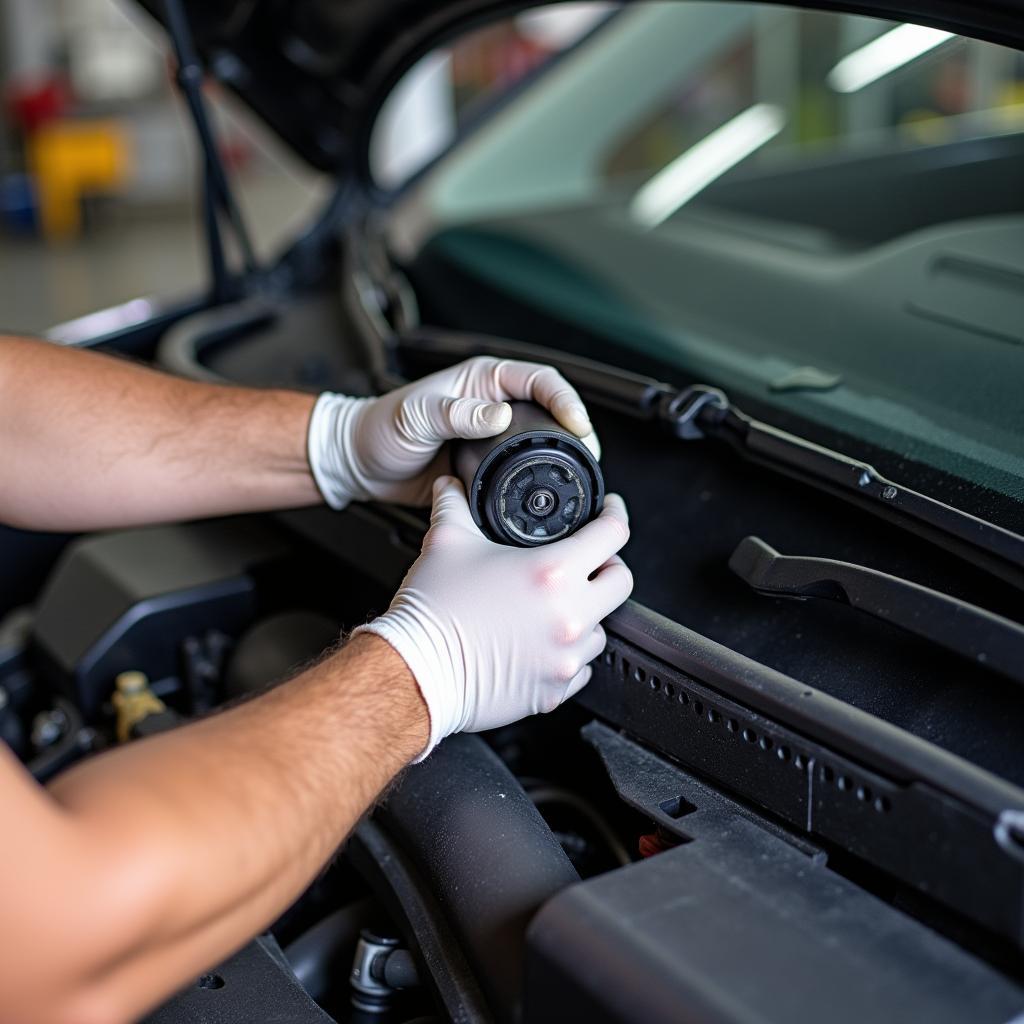Car wipers are an essential safety feature, ensuring clear visibility during rain or snow. When they malfunction, it can be a serious inconvenience and even a safety hazard. This guide provides a comprehensive overview of common wiper problems and how to fix them, designed for car owners and technicians alike.
Understanding Common Wiper Problems
Before diving into fixes, it’s crucial to understand the most prevalent issues:
1. Wiper Blades: These are the rubber strips that actually wipe the windshield. They wear down over time, causing streaks, skipping, or even tearing. Replacing them is often the simplest solution.
2. Wiper Motor: This electric motor powers the wiper arm movement. A faulty motor may result in slow, erratic, or no movement at all.
3. Wiper Linkage: This system connects the motor to the wiper arms, ensuring smooth and precise movement. Broken or worn linkages can cause inconsistent wiping patterns.
4. Wiper Switch: The switch inside your car controls the wiper speed and function. A malfunctioning switch may make it impossible to operate the wipers.
5. Wiper Fluid System: This system provides the necessary fluid for cleaning the windshield. A low fluid level, clogged reservoir, or damaged pump can hinder wiper performance.
Troubleshooting and Fixing Car Wiper Issues
Here’s a step-by-step guide to help you diagnose and fix common car wiper problems:
1. Inspecting the Wiper Blades
Check for wear and tear: Look for signs of damage, cracking, or torn rubber on the blades. If any of these are present, it’s time for a replacement.
Clean the blades: Use a microfiber cloth and rubbing alcohol to remove dirt, grime, and debris.
Replace the blades: If the blades are worn or damaged, choose high-quality replacements specifically designed for your car model. You can find a wide range of options online or at your local auto parts store.
2. Diagnosing the Wiper Motor
Check for power: Ensure that the wiper motor is receiving power by testing the fuse associated with it.
Listen for unusual noises: A grinding or clicking sound during operation may indicate a failing motor.
Test the motor: If the motor is not working at all, you can test it directly with a multimeter. This requires disconnecting the motor and applying power to its terminals.
 Diagnosing a faulty wiper motor
Diagnosing a faulty wiper motor
3. Assessing the Wiper Linkage
Check for broken or loose parts: Inspect the linkage for any visible damage or broken components.
Test the linkage: Move the wiper arms manually to see if there’s any binding or resistance.
Lubricate the linkage: Use a light lubricant, such as silicone spray, to reduce friction and improve movement.
4. Inspecting the Wiper Switch
Test the switch: Turn the wiper switch to different positions and listen for any unusual clicking or grinding noises.
Check for continuity: Use a multimeter to test the switch for continuity. This ensures that the switch is sending a signal to the wiper motor.
Replace the switch: If the switch is faulty, you may need to replace it. This is typically a relatively straightforward process, but it’s always best to consult your car’s manual or seek professional help if you’re unsure.
5. Evaluating the Wiper Fluid System
Check the fluid level: Open the reservoir cap and check the fluid level. If it’s low, add more wiper fluid.
Clean the reservoir: If the fluid is dirty or cloudy, clean the reservoir with a mixture of water and vinegar.
Inspect the pump: If the pump is not working, you’ll need to replace it. This is often a more complex task and may require professional assistance.
Expert Advice
“Always prioritize safety when working on car wipers. If you’re unsure about any steps, it’s best to consult a qualified mechanic to avoid potential damage or injury.” – John Smith, Certified Automotive Technician
Conclusion
Fixing car wiper issues can be a relatively simple task, but it’s important to identify the root cause. By following these steps, you can troubleshoot and resolve most wiper problems on your own. However, remember that some repairs may require professional assistance.
For any further assistance with your car wipers or any other automotive needs, contact AutoTipPro at +1 (641) 206-8880 or visit our office at 500 N St Mary’s St, San Antonio, TX 78205, United States.
Frequently Asked Questions (FAQs)
1. How often should I replace my wiper blades?
It’s generally recommended to replace your wiper blades every six to twelve months, or sooner if they show signs of wear or tear.
2. Can I use windshield washer fluid in the winter?
Yes, but make sure to use a winter-grade windshield washer fluid that contains antifreeze to prevent freezing.
3. Why are my wipers making a squeaking noise?
Squeaking noises often indicate worn wiper blades, dry rubber, or dirt and debris buildup on the blades.
4. How do I prevent my wiper blades from freezing to the windshield?
Use a de-icer spray on the windshield before freezing temperatures set in. You can also invest in a windshield cover to protect the entire windshield from the elements.
5. What are some tips for keeping my wipers working smoothly?
Clean your wiper blades regularly, replace them when worn, and make sure to use the correct type of windshield washer fluid for the weather conditions.






Leave a Reply